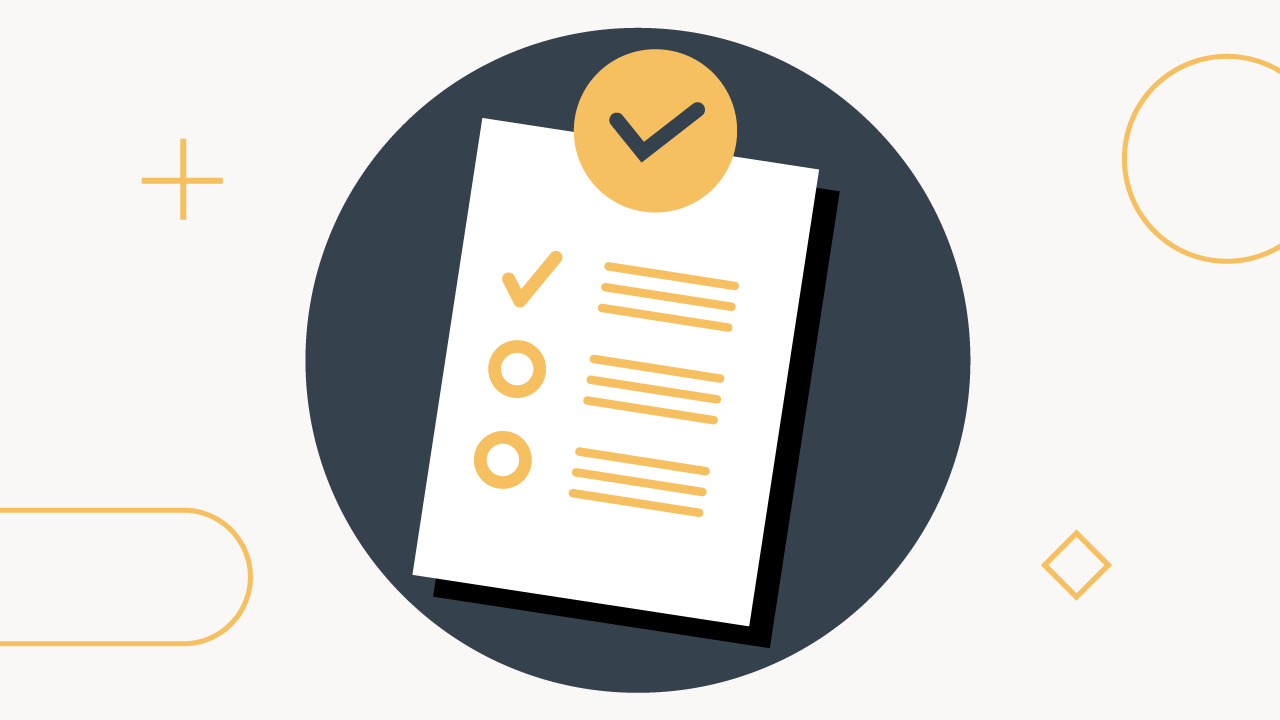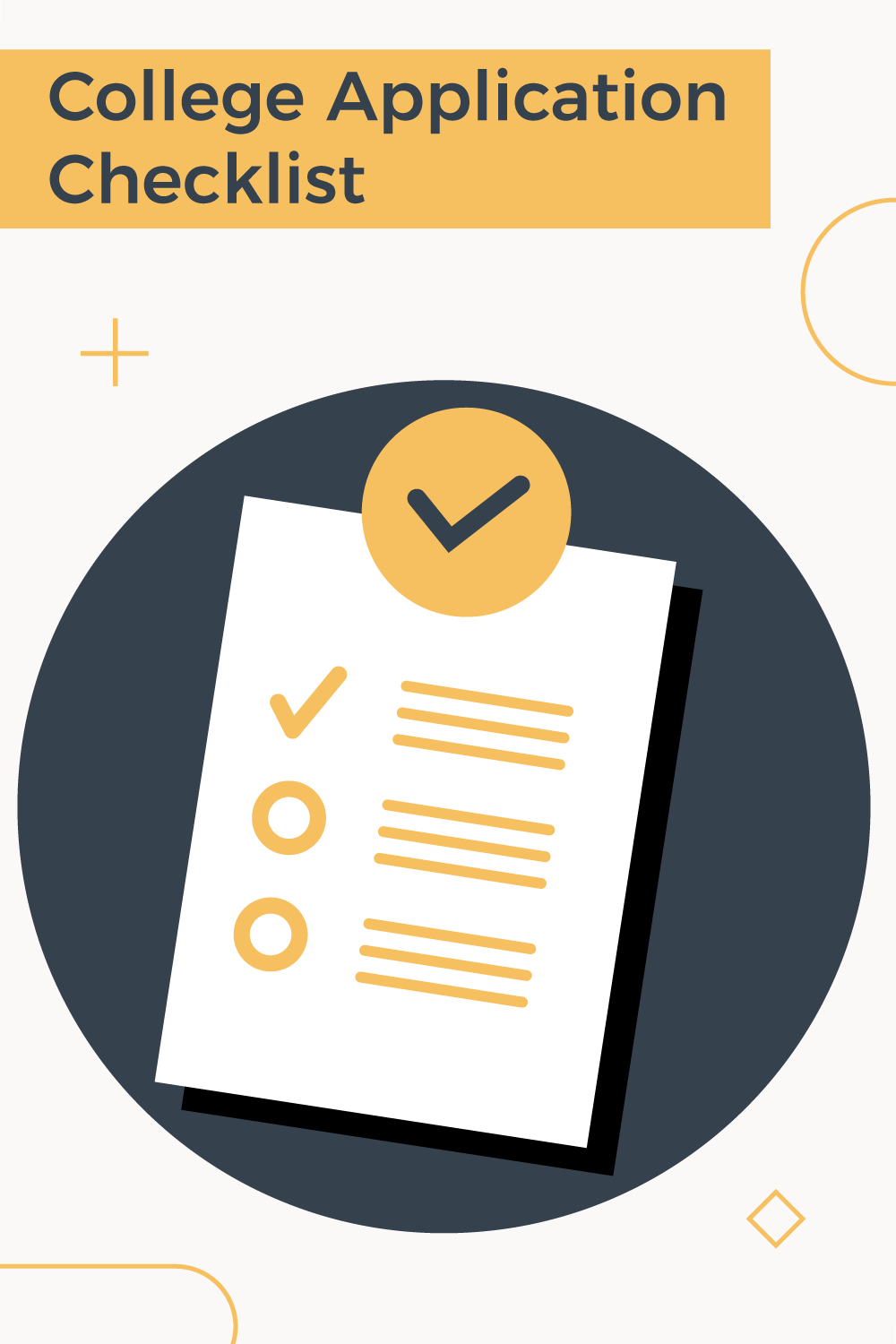
Applying to college is a muti-step process, and most high school students have not managed a multi-month process on their own. That's why you might want to make a college application checklist.
While there are always adults (such as parents, teachers, school counselors, or your dean) who can help you through the process, most students will want to take ownership of the application process. After all, you are the most important stakeholder in your college decision.
This college application checklist can help you apply for colleges with limited stress and maximum effectiveness.
College Application Activities for Junior Year
You don’t have to start the college application process during your junior year, but crossing these items off the list early will put you in a much better position to start applying to schools as soon as applications open in the fall.
Winter
Take a standardized test. During your junior year, you may want to take the ACT or SAT. These tests aren’t required by all schools, but at this point, you probably don’t know whether you’ll need these test results. By taking a standardized test during your junior year, you’ll be prepared to apply “early action” for some schools. You’ll also have time to retake the test if you think that your score doesn’t reflect your intellectual capacity.
Identify target schools. By your junior year, you have some idea of whether you can get into a competitive school or not. But prestige isn’t a particularly good indicator of whether a school is a good fit for you. Consider whether you want to attend a liberal arts school, a state school, or a community college. You’ll want to look at the potential cost of attending different schools. Decide whether you prefer to attend school close to home or further away. Don’t forget to consider how a school’s location could affect your college budget.
Related: How To Make A College List: Finding Academic And Financial Fit
Spring
Visit schools if possible. Visiting a few schools can help you get a feel for which schools are of interest to you. Most schools offer campus tours, and you can spend a few hours on campus to check out the various amenities on campus.
Create a list of awards, honors, and extracurriculars. Take a bit of time to record any awards and honors you’ve received during your high school career. This can include academic awards, but it can also include awards or honors from volunteering, from your part-time job, or any other activity outside of school. Don’t forget that a side hustle (especially building your own business) counts as an extracurricular.
Related: Best Extracurricular Activities For College Applications
College Application Activities for Senior Year
Senior year can be a whirlwind of activity, and it’s easy to leave college applications to the last second. Spacing out the college application process can help you enjoy your senior year while you also plan for post-secondary education.
Summer
If necessary, re-take standardized tests. If you plan to apply to schools that require standardized tests, and you aren’t happy with your score, the summer is the time to retake the test. You can spend a bit more time studying for the tests rather than balancing test prep and all your other academic concerns.
Create your “early action” school list. Early action is when you apply to a school and you find out about your admittance early in the year (typically in December) rather than waiting to find out until March or April. To keep your place in the school you typically need to accept or decline a position at the school by January. When you make your early action list, record the following in a document (like a Google Sheet or a Google Doc):
- When is the application deadline?
- What system is required to complete the application?
- Does the school have supplemental questions?
Many schools in the United States accept applications using the Common App. However, some schools like the University of California schools, have their own application system. A few schools only accept applications through a proprietary website.
Most systems allow you to fill out an application, and apply to as many schools as you want. However, some schools have supplemental sections or require supplemental writing. If a school on your early action list has supplementary requests, you will want to take note of that and plan time to complete that portion of the application.
Early Fall
Get your transcript. Schools may request that you send an official transcript to them, but you’ll need a personal copy of your transcript to complete college applications.
Seek recommendation letters. Letters of recommendation can give colleges a picture of who you are outside of the numbers that define you. About two months before you need a recommendation letter, ask coaches, former teachers, pastors, or other adult mentors to write a recommendation letter for you. You’ll need two or three recommendation letters, and you may need to follow up with them to make sure they can complete the recommendation letter on time. Don’t forget to write thank you notes when someone provides a recommendation letter to you.
Complete the FAFSA.
The FAFSA is an application for student aid including grants and loans. Many schools use information from the FAFSA to determine need-based aid from the school as well. Completing the FAFSA when it opens (typically on October 1st, but this year in December) will allow you to get a true picture of your cost of attendance.
Write a common college application essay. Some schools require students to submit a personal statement, and almost every school will look favorably on a well-written essay. You’ll want to put time into this essay. Consider writing two drafts before requesting feedback from peers or a trusted teacher. Once you get feedback, incorporate the feedback into your final essay. Remember, this is a personal essay. ChatGPT can’t write this for you.
Determine if you’re eligible for the Common Application Fee Waiver. Most colleges don’t want application fees to get in the way of your ability to apply to the school. If the school uses the Common Application to accept applications, you can qualify for a fee waiver if you are eligible for a Pell Grant or if you receive free or reduced cost lunches. Schools that use other systems typically offer fee waivers based on similar criteria.
Submit early action applications. At this point, you should be ready to finalize your early action applications and submit them to the schools on your early action list.
Create a regular application school list. This is similar to the step associated with early action school list. Be sure to note application deadlines and whether the school requires supplemental writing or other time-consuming activities. These notes will help you complete all your applications on time.
Late Fall
Review early action decisions and financial aid. Most schools that accept you as an early action applicant will send financial aid information with your acceptance package. Take time to review the financial aid package. Assess whether the cost (especially the cost of the student loans) makes sense for you. At this point, you should have the information you need to decide whether to commit to an early action school.
Update list of awards, honors, and extracurriculars. If you plan to apply to more schools, update your awards and honors, so you can take note of the new awards on all your applications.
Complete applications for any remaining schools on your target list. Most schools have application deadlines between December and January, so you’ll need to use that late fall to finalize your applications. It may be tempting to put this off until your school’s winter break, but do your best to break these applications up and complete them earlier so you can spend more of your free time with friends.
Spring
Review financial aid decisions. Springtime brings college decisions. You’ll start to hear back from colleges between March and April. If you haven’t already committed to a school, you’ll want to review the financial aid packages before you commit to a school. While you can always apply for more grants and scholarships, the financial aid information provides a good guide for how much college will really cost.
Commit to one school. With all your options in hand, it’s time for you to commit to a school. This may feel like a huge decision, and in some ways it is. But the decisions you make during your college years will affect your future more than a decision about where you’ll attend school.
Final Thoughts
While there will be lots of people around to help you, at the end of the day, applying to college is your responsibility. Knowing what schools you want to apply to is an important step. Then be sure to familiarize yourself with the requirements and deadlines of each school.
College applications can sneak up on you if you aren't careful. The earlier you start, the more prepared you'll be.

Hannah is a wife, mom, and described personal finance geek. She excels with spreadsheets (and puns)! She regularly explores in-depth financial topics and enjoys looking at the latest tools and trends with money.
Editor: Ashley Barnett Reviewed by: Robert Farrington
